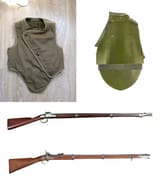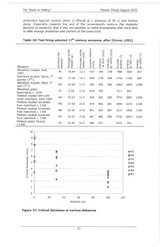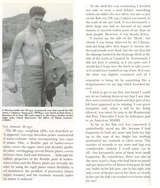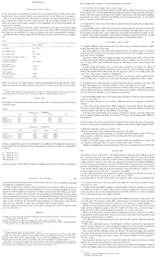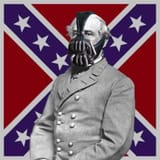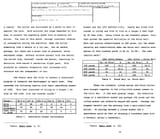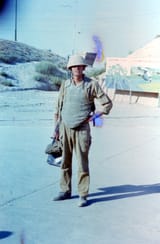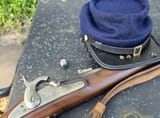Anonymous
8/19/2025, 2:15:46 AM
No.64139979
>>64139985
>>64140414
>>64140932
>>64141096
>>64147181
>>64148712
>>64150288
How would early Soviet body armor designs fair against American civil war-era weapons, including late smoothbore percussion caps and early rifled muskets?
>6b1: The protective composition of the vest consists of mosaically arranged hexagonal plates made of “soft” aluminium alloy AMg7ts, packed in a Avizent fabric vest with a quilted cotton lining. The slightly convex aluminum plates had a thickness of 6.4 mm (chest), 5.3 mm (belly) and 4.1 mm (back). Its weight was, depending on the size, 5.1-5.3 kg.
>SN-42: Originally made of 2 mm steel and weighed 3.5 kg (7.7 lb.) Following the adoption by the Wehrmacht of 9mm cartridges with mild steel core, the thickness was increased to 2.6 mm for the chest plate. This redesign received the name SN-46.
Also curious if anyone thinks the ssh-40 steel helmet would have been capable of directly stopping any projectiles from this era and if so at what range. I imagine it could probably defeat buck loadings from smoothbores, I'm not sure how a minie ball's velocity scaled with range though.
>6b1: The protective composition of the vest consists of mosaically arranged hexagonal plates made of “soft” aluminium alloy AMg7ts, packed in a Avizent fabric vest with a quilted cotton lining. The slightly convex aluminum plates had a thickness of 6.4 mm (chest), 5.3 mm (belly) and 4.1 mm (back). Its weight was, depending on the size, 5.1-5.3 kg.
>SN-42: Originally made of 2 mm steel and weighed 3.5 kg (7.7 lb.) Following the adoption by the Wehrmacht of 9mm cartridges with mild steel core, the thickness was increased to 2.6 mm for the chest plate. This redesign received the name SN-46.
Also curious if anyone thinks the ssh-40 steel helmet would have been capable of directly stopping any projectiles from this era and if so at what range. I imagine it could probably defeat buck loadings from smoothbores, I'm not sure how a minie ball's velocity scaled with range though.
